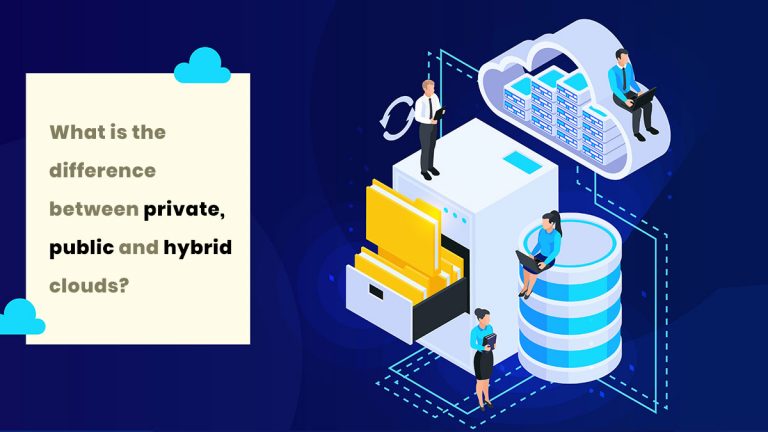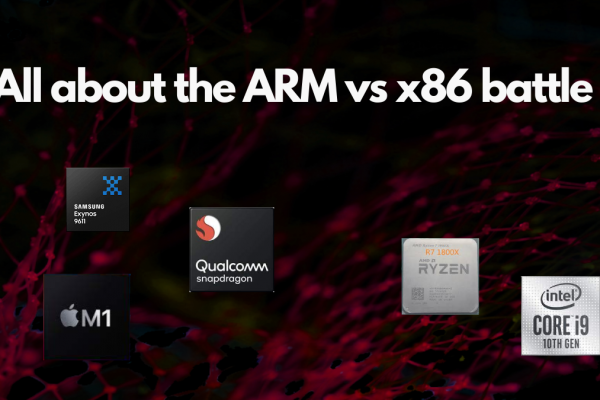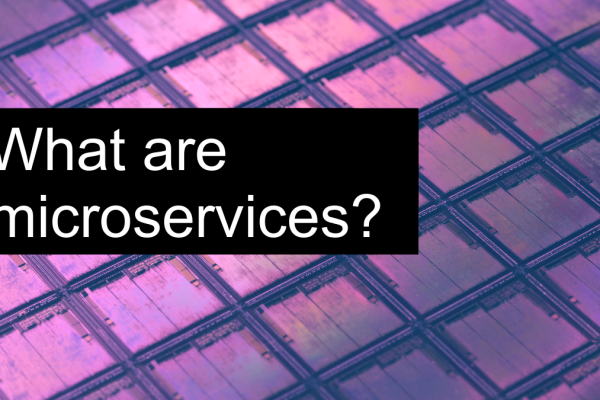Cloud-based systems can be deployed mainly in 3 different ways: Public, Private, and Hybrid cloud. And they are exactly what they sound like.
In a public cloud, you’ll be sharing all the hardware and networks with other users of the cloud. In a private cloud, the hardware resources will be isolated for your use alone. In the case of a hybrid cloud, some resources will be part of a private cloud, limited for your use within the company’s network, while the rest will be as part of a public cloud. Keep in mind that, just about all forms of cloud services, IaaS, or PaaS, or SaaS comes with private, public, or hybrid cloud models.
Public Cloud
This is the most common and often the most popular form of deploying cloud computing. Depending on the model, you either get the infrastructure as virtual machines or you get a platform or a software through shared hardware and networks. There won’t be any physical separation between the hardware, network, or storage used by your organization and other users on the same cloud. You’ll be sharing these resources with others. And the data centres will be located anywhere on the internet. Gmail and Google drive is a good example of a public cloud. Of course, they’re secure, but all the Gmail accounts use shared hardware. When it comes to enterprise cloud services, Microsoft Azure is a good example of a public cloud.
It may sound like a bit of a security risk, and yes it is. Others may be able to access your data or work. If you’re worried about sensitive data, such as credit card transactions or customer profiles, a public cloud may not be a good option for you. And there is also the aspect of control. Even in the case of a public IaaS, you’re limited to the configurations offered by the provider. Organisations may not be able to meet regulatory requirements because of this.
But, if you’re just starting out, public cloud is probably the best option. Of all the three, public cloud is the cheapest. In terms of initial capital, you don’t have to spend a whole lot of resources to set up and configure your servers and networks. And in the long run, you don’t require dedicated personal to maintain and update the infrastructure, since all that will be handled by the provider. Once you’re ready to go big, it’s easy to scale up with a public cloud, in an almost unlimited fashion.
Almost all providers have a pay as you go model, and you pay only for what you use. This will further reduce your expenses. And a cloud provider will have redundancies in place in case of hardware failures so you don’t have to worry about your systems going offline. Most providers give options for backup and restore (Of course, understand the details before you choose a provider)
Advantages
- Low cost
- Easy to scale up
- No maintenance costs
- Redundant systems to prevent a complete failure.
Disadvantages
- Security and privacy risks
- Issues with regulatory compliances when the infrastructure is maintained by a third party.
Private cloud
In a private cloud, computing resources are physically isolated and are not shared with other customers. The resources are delivered to you through a secure private network, and the data centers are located within the organisation’s internal network. Keep in mind that a private cloud doesn’t necessarily mean by on-premise infrastructure. A private cloud could be either on-premise or it could be a hosted private cloud solution.
In an on-premise solution, the organisation or the company manages its own data centre, with their hardware, networking, and storage. The internal IT team will manage the data centre, securing, maintaining and updating it. But building up your own data centre takes time, and is much more difficult to scale up.
This is where hosted private clouds come to play. Here the data centre will be maintained by a third party vendor, and may be located along with hardware of other users, BUT, there will be no sharing of resources. Your hardware and storage will be isolated and separate and you will be accessing your private cloud through a separate private network. Your IT team will install and manage cloud management platform on the infrastructure and in case of PaaS, your team will install the PaaS software on either your on-premise infrastructure or on a public IaaS infrastructure.
Even if it is on-premise or hosted, a private cloud will give an organisation a higher degree of control than a public solution, one which you can customize according to your specific requirements. You’ll get a solution that cannot be accessed by others, guaranteeing a higher level of security. And it’s much more easier to comply with the regulatory requirements when you’re using a private cloud.
For the security, you’ll be compromising on scalability, particularly for on-premise private cloud. While you can still scale up with a private cloud since you’re relying on your own hardware, it won’t be as easy as it is with a public cloud. If your organisation or business have sudden or seasonal spikes in demand, private clouds may be a hindrance. And of course, a private cloud will be more expensive, both in terms of initial costs and running costs, compared to a public cloud solution.
Many companies involved in public cloud services also offer private cloud services, including the likes of IBM and Oracle. One of the most popular private cloud providers is VMware, the company that develops the virtualization software used by many cloud service providers. Some of them offer private hosted cloud, while some of them offer the suite of software to manage your private cloud.
Advantages
- Higher levels of security
- Easier to comply with regulations
- More control
Disadvantages
- More expensive
- More maintenance compared to a public cloud
Hybrid Clouds
A hybrid cloud solution combines the best parts of public and private clouds, because it’s literally using both private and public clouds. The sensitive work, such as an organisation’s financial data will be stored in the private cloud and the rest will be on a public cloud. This is a great strategy to minimise the costs without compromising on security or privacy, and easily stay within the regulations.
If your application gets a sudden increase in usage, whether seasonal or not, you can use a hybrid cloud to deal with the increasing demand. In this way (called cloud bursting). If you’re investing in a private cloud that can deal with sudden spikes, those resources will be remaining idle most of the time. And if you’re completely relying on public cloud, it can scale easily with demand, but in the long run, using public cloud for a high demand application may be expensive than a private cloud. With cloud bursting, you set up your own private cloud for the usual demand, and when there is excess demand, you make use of the public cloud.
In this situation, you get the level of control you can get with a private cloud, and the flexibility you get with a public cloud. Netapp is one of the top hybrid cloud providers, and they have partnered with Microsoft Azure, Google Cloud and Amazon Web services to make hybrid cloud possible with these public cloud providers as well as to allow easy migration to the cloud.
Advantages
- Cost-effective
- Flexible
Disadvantages
- Initial costs are high compared to a public cloud
In choosing a cloud computing model, there are no right or wrong answers, only what’s best suited for you. Consider the type of work you’re doing, the level of security, the ease of management, and the associated costs before you make the decision.




